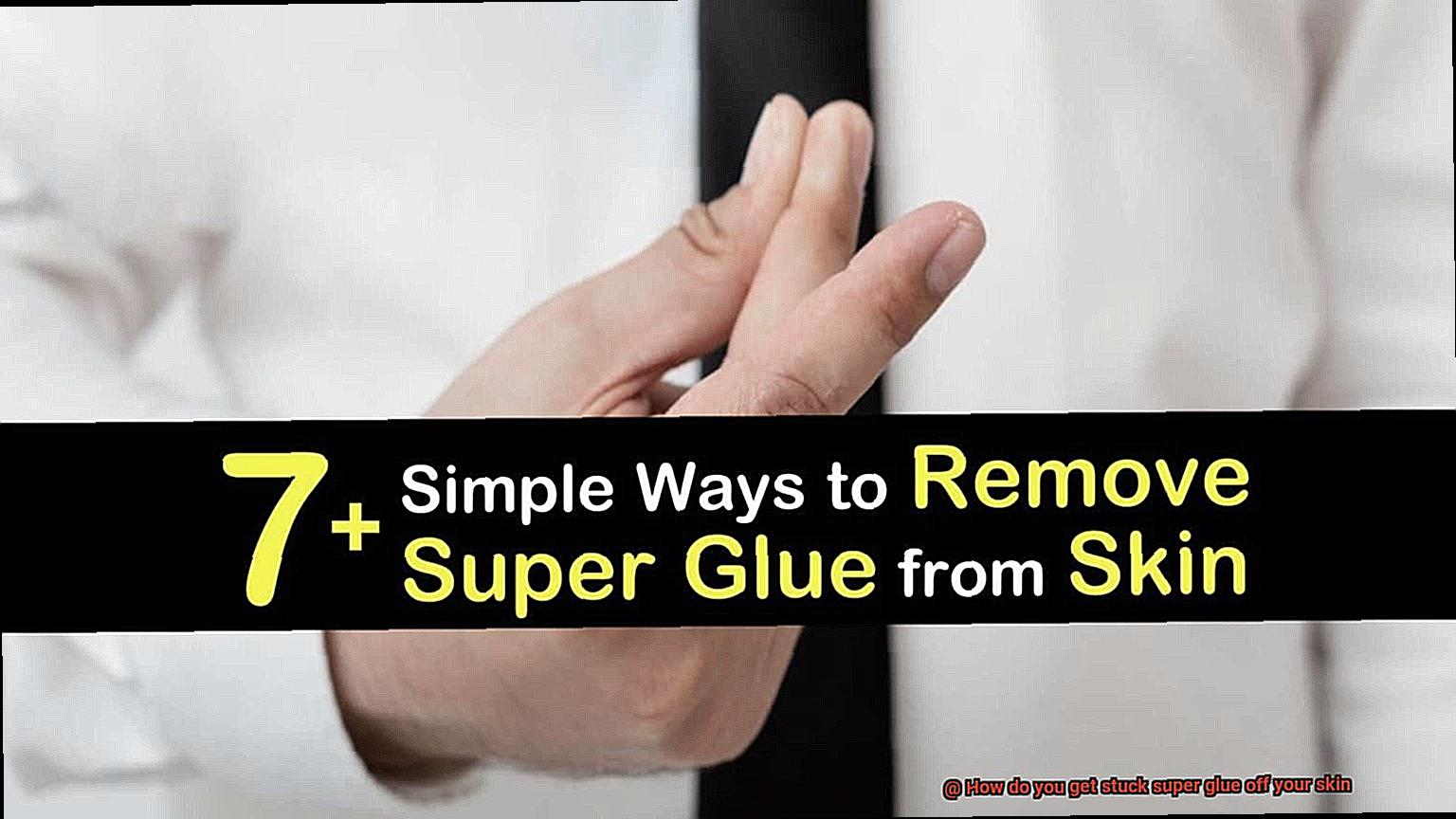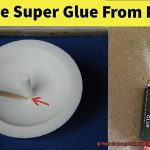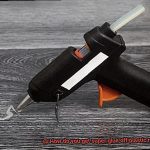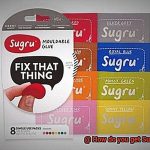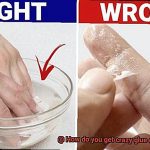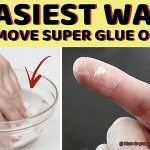Picture this: You’re working on a project, and suddenly, disaster strikes. A pesky drop of super glue lands on your precious skin, leaving you in a sticky situation. But fear not. Don’t panic and don’t start peeling layers of skin off just yet. We’ve got your back. In this blog post, we’ll show you how to bid farewell to that stubborn super glue and restore the smoothness of your skin. No more adhesive battles – just freedom to move without feeling like a human flytrap. So let’s tackle this challenge head-on and get ready for some ungluing magic.
Safety Tips to Avoid Getting Super Glue on Your Skin
Contents
- 1 Safety Tips to Avoid Getting Super Glue on Your Skin
- 2 Soaking in Warm, Soapy Water: The Easiest Method to Remove Super Glue
- 3 Using Acetone: A Common Ingredient for Dissolving Super Glue
- 4 Applying Oil or Petroleum Jelly: Breaking Down the Super Glue Bonds
- 5 Using a Pumice Stone: Gently Scrubbing Away the Super Glue
- 6 Home Remedies for Removing Super Glue from Skin
- 7 Seeking Medical Advice: When DIY Methods Don’t Work
- 8 Conclusion
Super glue is a remarkably strong adhesive that can bond quickly to various surfaces, including skin. Accidentally getting super glue on your skin can be frustrating and potentially harmful if not handled properly. Fortunately, there are several safety tips you can follow to avoid this situation. Let’s explore them in more detail.
Wear protective gloves:
Whenever you’re using super glue, it is crucial to wear protective gloves. These gloves act as a shield between the adhesive and your skin, significantly reducing the risk of accidental contact. They provide an extra layer of defense, ensuring that the glue stays away from your precious skin.
Use protective barriers:
If gloves aren’t readily available, consider using a barrier like plastic wrap or a plastic bag to cover your hands before working with super glue. These barriers create an additional protective layer, acting as a fortress against accidental spills or contact. Wrap your hands in this shield, and you can work confidently without worrying about the glue finding its way onto your skin.
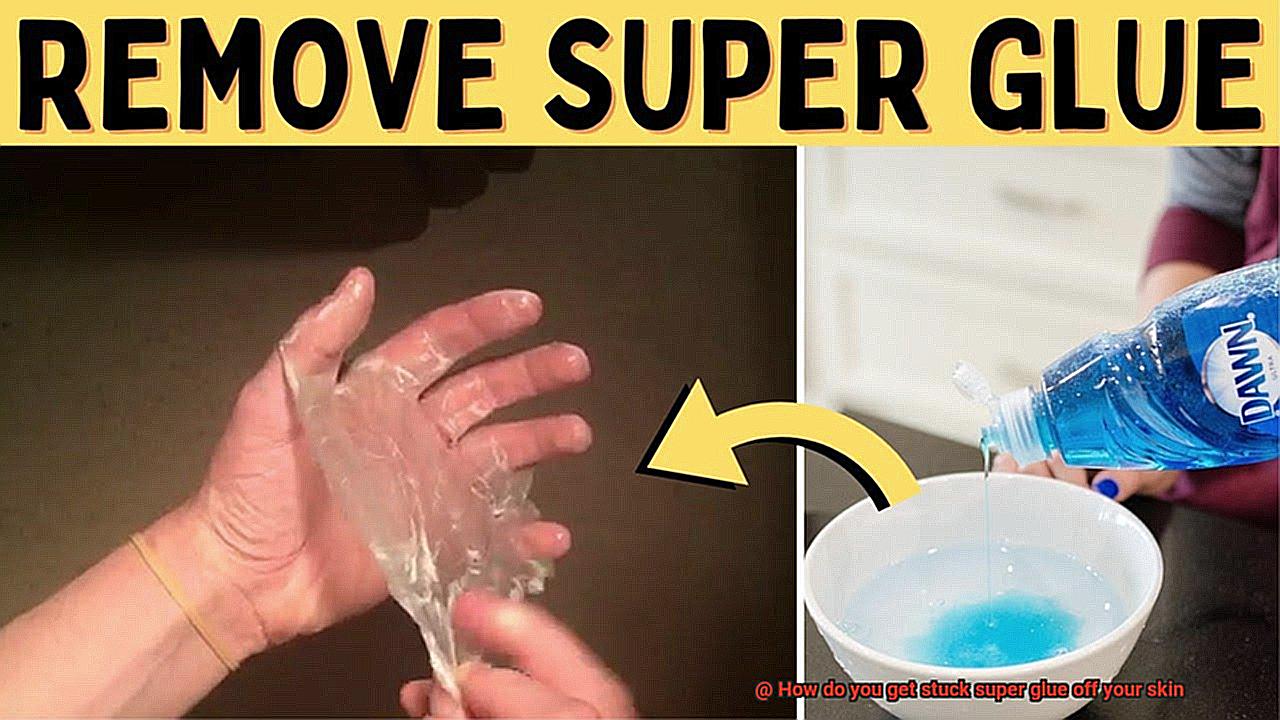
Keep your work area clean:
Maintaining a clean work area is vital to prevent accidents and spills. Clear away any unnecessary items or clutter that may increase the chances of getting super glue on your skin. A tidy workspace ensures that you have better control over the adhesive and minimizes the risk of unwanted encounters between the glue and your delicate skin.
Use precision applicators:
Super glue often comes with a small applicator tip designed for precise application. Utilizing this type of applicator reduces the risk of accidentally getting the glue on your skin. The precision tip allows you to target specific areas with accuracy, ensuring that the adhesive goes exactly where you want it and nowhere else.
Be mindful of movements:
When working with super glue, be mindful of your movements and avoid touching your face or other sensitive areas of your body. This simple precaution prevents accidental transfer of the adhesive to your skin, ensuring that it remains in its intended place. Stay aware and conscious of your actions to keep the glue away from your skin.
Conclusion:
By following these safety tips, you can greatly reduce the risk of getting super glue on your skin. Remember, accidents can still happen, so it’s important to know how to remove super glue if it does come into contact with your skin.
Soaking in Warm, Soapy Water: The Easiest Method to Remove Super Glue
Fear not, for there is a simple and effective solution that requires nothing more than warm, soapy water. This powerful combination has the ability to break down the bond between the glue and your skin, making removal a breeze.
But why warm, soapy water? The warmth helps to soften the glue, loosening its grip and allowing for easy removal. However, it’s important to note that the water should only be warm, not scalding hot, as hot water can cause harm to your skin. Soothing and gentle are the key words here.
To begin this magical process, fill a bowl or basin with warm water that is comfortable to the touch. Then, add a few drops of mild soap – dish soap or hand soap work wonders – and gently mix to create a soapy solution. This concoction will aid in breaking down the adhesive properties of the super glue.
Now it’s time for the main event – soaking. Submerge the affected area in the warm, soapy water for approximately 15-30 minutes. During this time, you can even indulge in some gentle rubbing with your fingers or a soft cloth to speed up the process. The glue will gradually loosen its hold on your skin, preparing for an easy removal.
Once you’ve soaked for the appropriate time, attempt to peel off the softened glue from your skin. If it doesn’t come off easily, don’t fret. Simply repeat the soaking process until you achieve success. Keep in mind to be gentle and avoid excessive force or pulling too hard to prevent any skin irritation or damage.
After successfully bidding farewell to the glue, rinse the area with clean water to remove any lingering soap residue. Pat dry with a clean towel and seal the deal with a moisturizer or soothing cream to nourish and protect your precious skin.
Using Acetone: A Common Ingredient for Dissolving Super Glue
Fear not, for the solution to your sticky situation lies within a common household ingredient – acetone. In this article, we will delve into the world of acetone and discover how it can be your secret weapon in dissolving super glue from your skin, freeing you from its adhesive clutches.
Understanding Acetone: A Mighty Solvent
Acetone, a colorless liquid with a pungent odor, is a powerful solvent commonly found in nail polish remover. It possesses the remarkable ability to break down the chemical bonds in super glue, making it easier to remove. However, before embarking on its usage, it is crucial to conduct a patch test on a small area of skin to ensure there are no allergic reactions or irritations.
The Step-by-Step Process: Kiss Sticky Situations Goodbye
Here’s a simple guide on how to use acetone to dissolve super glue from your skin:
- Soak a cotton ball or pad in acetone.
- Gently dab the acetone-soaked cotton ball onto the affected area.
- Allow the acetone to permeate the skin for a few minutes, giving it ample time to dissolve the stubborn glue.
- Afterward, delicately rub the area with a soft cloth or paper towel, bidding farewell to the dissolved adhesive.
- Repeat this process as necessary until all traces of glue have vanished.
Post-Treatment Care: Nurturing Your Skin
After utilizing acetone, it is imperative to cleanse the skin thoroughly with soap and water to eradicate any residue. This step is crucial in preventing potential skin irritation. Additionally, moisturizing the treated area will alleviate dryness and discomfort, ensuring your skin remains healthy and supple.
Applying Oil or Petroleum Jelly: Breaking Down the Super Glue Bonds
Super glue can be a lifesaver when it comes to bonding objects together, but it can quickly become a nuisance when it accidentally sticks to our skin. Fortunately, there’s a simple and effective solution to break down those super glue bonds – oil or petroleum jelly. In this post, we’ll explore how these substances work their magic, discuss their advantages and disadvantages, and provide step-by-step instructions for safely removing super glue from your skin.
The Power of Oil and Petroleum Jelly:
Oil and petroleum jelly are excellent options for breaking down super glue bonds due to their ability to dissolve the adhesive. When applied to the affected area, they seep into the microscopic cracks and crevices created by the glue, weakening its hold on the skin. This makes it easier to peel off without causing any harm or discomfort.
Step-by-Step Guide:
- Gather your supplies: You’ll need oil or petroleum jelly (such as olive oil, coconut oil, baby oil, or Vaseline) and a cotton ball or soft cloth.
- Apply the oil or petroleum jelly: Pour a small amount onto the cotton ball or cloth. Gently rub the affected area, ensuring complete coverage of the adhesive. Allow it to sit for a few minutes, giving it time to penetrate and break down the glue.
- Gently rub again: After a few minutes, gently rub the area again with the cotton ball. You’ll notice that the super glue starts to loosen and come off more easily. Continue rubbing until all of the glue has been removed from the skin.

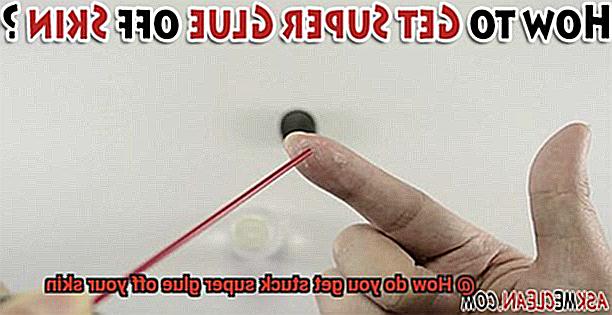
Important Tips:
- Exercise caution: Avoid getting oil or petroleum jelly in your eyes or mouth as they can cause irritation. If contact occurs, rinse thoroughly with water and seek medical attention if necessary.
- Test for allergies: If you have sensitive or allergy-prone skin, perform a patch test by applying a small amount of oil or petroleum jelly on a small area before using it on a larger area. This helps identify any potential skin irritations or allergic reactions.
- Choose the right oil or petroleum jelly: Different types of oils or petroleum jelly may have varying effectiveness in removing super glue. Experiment with different options to find the one that works best for your skin type.
Using a Pumice Stone: Gently Scrubbing Away the Super Glue
Super glue can be a stubborn adhesive to remove, but with the right technique, a pumice stone can be a helpful tool in the process. In this guide, we will outline the steps involved in using a pumice stone to gently scrub away super glue, ensuring effective removal without causing harm to the surface.
Step 1: Allow the glue to dry completely
Before attempting to remove the super glue, it is important to ensure that it has fully dried and hardened. This will make it easier to work with and minimize any potential damage.
Step 2: Wet the affected area
To soften the glue and make it more pliable, wet the glued area with warm water. This will help loosen the adhesive bond and prepare the surface for gentle scrubbing.
Step 3: Gently rub with circular motions
Take your pumice stone and begin gently rubbing the glued area in circular motions. Use light pressure to avoid irritating or damaging the surface. The rough texture of the pumice stone will help loosen the glue without causing harm.
Step 4: Keep the area moist
If needed, periodically wet the pumice stone or re-wet the glued area to keep it moist during the removal process. This will aid in breaking apart the glue and prevent any discomfort.
Step 5: Rinse and dry
Once all the super glue has been removed, rinse the area with warm water and pat dry with a clean towel. It is important to thoroughly remove any residue to ensure a clean surface.
Important Tips:
- Avoid using excessive force or harsh scrubbing, as this can cause abrasions or damage to the surface.
- If the glue does not come off easily or if you experience discomfort, stop using the pumice stone and try an alternative method.
- Test for allergies before using the pumice stone, as some individuals may be sensitive to its rough texture.
- Always follow the instructions on your chosen pumice stone product to ensure safe and effective use.

Home Remedies for Removing Super Glue from Skin
Don’t worry, we’ve got you covered. In this article, we’ll explore some effective and easy-to-use home remedies for removing super glue from your skin. These remedies are not only affordable but also use common household items that are safe for your skin.
Acetone: The Superhero of Nail Polish Removers
Soak a cotton ball or pad in acetone and gently rub it over the affected area. Be cautious of open wounds or cuts as acetone may cause stinging or irritation.
Warm Soapy Water: A Classic Remedy
Soak the affected area in warm, soapy water for 10-15 minutes to soften the glue. Use a soft cloth or sponge to remove any remaining residue.
Olive Oil or Coconut Oil: Natural Loosening Agents
Apply a small amount of oil to the glued area and gently massage it. Use a soft cloth or sponge to wipe away the glue.
Vinegar: A Pantry Staple Solution
Soak a cotton ball or pad in vinegar and apply it directly to the glued area. Let it sit for a few minutes before gently rubbing or peeling off the glue.
Remember, patience is key when removing super glue from your skin. Avoid forcefully pulling or picking at the glue, as this may cause skin irritation or damage. Instead, take your time and gently work on loosening the glue using one of these methods.
If you have a large amount of super glue on your skin or experience severe pain or discomfort, it’s best to seek medical advice. A healthcare professional can provide guidance and use professional-grade solvents to safely remove the super glue.
Seeking Medical Advice: When DIY Methods Don’t Work
Super glue mishaps happen to the best of us, and while DIY methods can often save the day, there are times when they simply don’t cut it. In such cases, seeking medical advice becomes crucial. This article explores the importance of turning to healthcare professionals when DIY methods fail to remove super glue from the skin.
Sub-topics:
Understanding the Strength of Super Glue:
Super glue is renowned for its adhesive properties, making it notoriously challenging to remove from the skin. When DIY methods fall short, it’s important to recognize that super glue has likely fully cured and hardened, rendering simple household remedies ineffective.
Potential Risks of DIY Removal:
Attempting to remove super glue without professional guidance can lead to further damage or infection, especially when it has bonded to sensitive areas or open wounds. Improper removal techniques may cause irritation or harm to the skin, exacerbating the situation.
Benefits of Seeking Medical Advice:
Healthcare professionals possess the expertise and tools necessary for safe and effective removal of super glue from the skin. They have access to specialized solvents and adhesive removers designed specifically for use on delicate skin. By seeking medical advice, you ensure that your skin remains unharmed and any potential complications are avoided. Additionally, healthcare providers can provide proper wound care instructions after removing super glue from sensitive areas, reducing the risk of infection and promoting optimal healing.
Finding the Right Medical Professional:
In many cases, a visit to your primary care physician or a dermatologist is sufficient for super glue removal. These professionals are well-equipped to handle such situations and can evaluate your specific circumstances to provide appropriate guidance. Emergency rooms may not always be necessary, saving you time and resources.
cSecPYkjshY” >
Also Read: Can You Use Super Glue For Fake Nails?
Conclusion
In conclusion, dealing with stuck super glue on your skin can be a frustrating and potentially harmful predicament if not handled correctly. Fortunately, there are numerous effective techniques you can employ to eliminate the super glue and restore the smoothness of your skin.
First and foremost, adhering to safety precautions is crucial in preventing super glue from coming into contact with your skin. This entails donning protective gloves, utilizing barriers such as plastic wrap or bags, maintaining a clean work area, using precise applicators, and being mindful of your movements.
Should you find yourself in the unfortunate situation of having super glue on your skin, there are several methods you can experiment with. Soaking in warm, soapy water is the simplest approach and aids in breaking down the bond between the glue and your skin. Another commonly used ingredient that effectively dissolves super glue is acetone, which can be found in nail polish remover. Additionally, applying oil or petroleum jelly can help weaken the adhesive’s grip. Lastly, employing a pumice stone allows for gentle scrubbing to remove the super glue without causing harm to your skin’s surface.
It is imperative to exercise caution when utilizing these methods and conduct allergy tests before applying any substances to your skin. If DIY remedies prove ineffective or if you have a substantial amount of super glue on your skin accompanied by severe pain or discomfort, it is advisable to seek medical advice from a healthcare professional who can safely remove the super glue.
Remember to approach the process patiently and delicately when removing super glue from your skin to avoid further damage or irritation.

